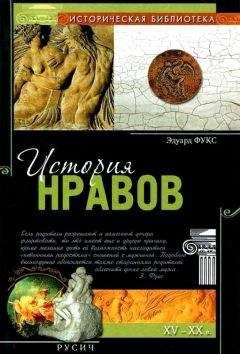Марк Хаузер - Мораль и разум. Как природа создавала наше универсальное чувство добра и зла
Baird R. M. & Rosenbaum S. E. (2001). The Ethics of Abortion: Pro-Life vs ProChoice. New York: Prometheus Books.
Baker M. C. (2001). The Atoms of Language. New York: Basic Books.
Baldwin D. A. & Baird J. A. (2001). Discerning intentions in dynamic human action // Trends in Cognitive Science, 5, 171—178.
Bariaji M. R. (2001). Implicit attitudes can be measured // H. L. Roediger & J. S. Nairne & I. Neath & A. Surprenant (Eds.), The Nature of Remembering: Essays in Honor of Robert G. Crowder. Washington: American Psychological Association.
Baron J. (1994). Nonconsequentialist decisions // Behavioral and Brain Sciences, 17(1), 1—10.
Baron J. (1998). Judgment Misguided: Intuition and Error in Public Decision Making. Oxford: Oxford University Press.
Baron J., Granato L., Spranca M. & Teubal E. (1993). Decision making biases in children and early adolescents: exploratory studies // Merrill-Palmer Quarterly, 39, 23—47.
Baron-Cohen S. (1995). Mindblindness. Cambridge, MA: MIT Press.
Baron-Cohen S., Leslie А. M. & Frith U. (1985). Does the autistic child have a “theory of mind”? // Cognition, 21, 37—46.
Barrett L. & Henzi S. P. (2001). The utility of grooming in baboon troops // R. Noe & J. A. R. A. M. van Hoof & P Hammerstein (Eds.), Economics in Nature (p. 119—145). Cambridge: Cambridge University Press.
Barry D. (1995). Complete Guide to Guys. New York: Ballantine Book, Random House.
Bassili J. N. (1976). Temporal and spatial contingencies in the perception of social events // Journal of Personality and Social Psychology, 33, 680—685.
Bateson M. & Kaselnik A. (1997). Starlings’ preferences for predictable and unpredictable delays to food // Animal Behaviour, 53, 1129—1142.
Baumeister R. E (1999). Evil. Inside human violence and cruelty. New York: W H. Freeman.
Baumeister R. F, Stillwel A. & Heatherton T E (1994). Guilt: An interpersonal approach // Psychological Bulletin, 115, 243—267.
BecharaA., Damasio A., Damasio H. be Anderson S. W. (1994). Insensitivity to future consequences following damage to human prefrontal cortex // Cognition, 50, 7—15.
Bechara A., Damasio H., Tranel D. & Damasio A. (1997). Deciding advantageously before knowing the advantageous strategy // Science, 275, 1293—1295.
Beck A. T (1999). Prisoners of Hate: The cognitive basis of anger, hostility and violence. New York: HarperCollins.
BekoffM. (2001a). The Dolphin’s Smile. New York: Discover.
BekoffM. (2001b). Social play behaviour: cooperation, fairness, trust, and the evolution of morality //Journal of Consciousness Studies, 8, 81—90.
BekoffM. (2004). Wild justice, cooperation, and fair play: minding manners, being nice, and feeling good // R. Sussman & A. Chapman (Eds.), The Origins and Nature of Sociality (p. 53—79). Chicago: Aldine Press.
Belyaev D. K. (1979). Destabilizing selection as a factor in domestication // Journal of Heredity, 70, 301—308.
Bentham J. (1789/1948). Principles of Morals and Legislation. New York: Haffner.
Bercovitch F. B. (1988). Coalitions, cooperation and reproductive tactics among adult male baboons // Animal Behaviour, 36, 1198—1209.
Bergman T. J., Beehner J. C, Cheney D. & Seyfarth R. (2003). Hierarchical classification by rank and kinship in baboons // Science, 302, 1234—1236.
Berkowitz L. & Daniels L. R. (1964). Affecting the salience of the social responsibility norm: effects of past help on the response to dependency relationships // Journal of Abnormal and Social Psychology, 68, 275—281.
Berthoz S.,Armony J. L., Blair R. J. R. & Dolan R. J. (2002). An f MRI study of intentional and unintentional (embarrassing) violations of social norms // Brain, 125, 1696—1708.
Binmore K. G. (1998). Game theory and the social contract. II. Just Playing. Cambridge, MA: MIT Press.
Blair R. J. R. (1995). A cognitive developmental approach to morality: investigating the psychopath // Cognition, 57, 1—29.
Blair R. J. R. (1997). Moral reasoning and the child with psychopathic tendencies // Personality and Individual Differences, 22, 731—739.
Blair R. J. R. & Cipolotti L. (2000). Impaired social response reversal. A case of ‘acquired sociopathy’ // Brain, 123, 1122—1141.
Blair R. J. R., Morris J. S., Frith C. D., Perrett D. I. & Dolan R. J. (1999). Dissociable neural responses to facial expressions of sadness and anger // Brain, 122, 883— 893.
Blair R. J. R., Sellars C, Strickland /., Clark E, Williams A. О., Smith M. & Jones L. (1995). Emotion attributions in the psychopath // Personality and Individual Differences, 19, 431—437.
Boehm C. (1999). Hierarchy in the Forest: The evolution of egalitarian behavior. Cambridge, MA: Harvard University Press.
Bok S. (1978). Lying: Moral Choice in Public and Private Life. London: Quarter Books.
Bolig R., Price C. S., O'Neill P L. & Suomi S. J. (1992). Subjective assessment of reactivity level and personality traits of rhesus monkeys // International Journal of Primatology, 13, 287—306.
Bouchard T J., Lykken D. T, McGue M., Segal N. L & Tellegen A. (1990). Sources of human psychological differences: the Minnesota Study of Twins Reared Apart // Science, 250, 223—228.
Bowles S. & Gintis H. (1998). Is equality passe? Homo reciprocans and the future of egalitarian politics // Boston Review, Fall, 1—27.
Bowles S. & Gintis H. (1999). Is equality passe? Homo reciprocans and the future of egalitarian politics // Boston Review, 23, 4—35.
Bowles S. & Gintis H. (2003). The evolution of cooperation in heterogeneous populations. Unpublished manuscript, Santa Fe.
Boyd R., Gintis H., Bowles S. & Richerson P J. (2003). The evolution of altruistic punishment // Proceedings of the National Academy of Sciences, USA, 100, 3531—3535.
Boyd R. & Richerson P J. (1992). Punishment allows the evolution of cooperation (or anything else) in sizeable groups // Ethobgy and Sociobiology, 113, 171— 195.
Boyd R. & Richerson P J. (2005). The Origin and Evolution of Cultures. New York: Oxford University Press.
Brewer M. B. (1999). The psychology of prejudice: ingroup love or outgroup hate? // Journal of Social Issues, 55, 429—444.
Brosnan S. F. bade Waal F. В. M. (2003). Monkeys reject unequal pay // Nature, 425, 297—299.
Brosnan S. F., Schiff H. C. & de Waal F. В. M. (2005). Tolerance for inequity may increase with social closeness in chimpanzees // Proceedings of the Royal Society, London, B, 1560, 253—258.
Brothers L. (1997). Friday’s Footprints. New York: Oxford University Press.
Brothers L. & Ring B. (1992). A neuroethological framework for the representation of minds //Journal of Cognitive Neuroscience, 4, 107—118.
Brown D. E. (1991). Human Universals. New York: McGraw Hill.
Bshary R. (2001). The cleaner fish market // R. Noe & J. A. R. A. M. van Hoof & P Hammerstein (Eds.), Economics in Nature (p. 146—172). Cambridge: Cambridge University Press.
Butterworth B. (1999). What Counts: How every brain is hardwired for math. New York: Free Press.
Byrne R. & Whiten A. (1990). Tactical deception in primates: The 1990 database // Primate Report, 27, 1—101.
Byrne R. W. & Corp N. (2004). Neocortex size predicts deception rate in primates // Proceedings of the Royal Society, London, B, 277, 1693—1699.
Caldwell R. L. (1986). The deceptive use of reputation by stomatopods // R. W Mitchell & N. S. Thompson (Eds.), Deception: perspectives on human and nonhuman deceit (p. 129—146). New York: SUNY Press.
Call J. (2001). Chimpanzee social cognition // Trends in Cognitive Science, 5, 388— 393.
Call J., Hare B., Carpenter M. & Tomasello M. (2004a). Do chimpanzees discriminate between an individual who is unwilling to share and one who is unable to share? // Developmental Science, 4, 488—498.
CallJ., Hare B., Carpenter M. & Tomasello M. (2004b). ‘Unwilling’ versus ‘unable’: chimpanzees’ understanding of human intentional action // Developmental Science, 7, 488—498.
Call J. & Tomasello M. (1999). A nonverbal theory of mind test. The performance of children and apes // Child Development, 70, 381—395.
Caramazza A. (1998). The interpretation of semantic category-specific deficits: what do they reveal about the organization of conceptual knowledge in the brain? // Neurocase, 4, 265—272.
Caramazza A. & Shelton J. (1998). Domain-specific knowledge systems in the brain: the animate-inanimate distinction //Journal of Cognitive Neuroscience, /0,1—34.
Carey S. (1985). Conceptual Change in Childhood. Cambridge, MA: MIT Press.
Carey S. (in press). The Origins of Concepts. Cambridge, MA: MIT press.
Carlson S. M. & Moses L. J. (2001). Individual differences in inhibitory control and children’s theory of mind // Child Development, 72, 1032—1053.
Carlson S. M., Moses L. J. & Hix H. R. (1998). The role of inhibitory processes in young children’s difficulties with deception and false belief // Child Development, 69(3), 672—691.
Casati R. & Varzi A. C (1996). Events. Brookfield: Dartmouth Publishing Company.
Chalmeau R., Visalberghi E. & Galloway A. (1997). Capuchin monkeys, Cebus apella, fail to understand a cooperative task // Animal Behaviour, 54, 1215—1225.
Chandler M., Fritz A. S. & Hala S. (1989). Small scale deceit: deception as a marker of two-, three-, and four-year olds’ early theories of mind // Child Development, 60, 1263.
Chandlery M. J., Sokol В. W. & Wainryb C. (2000). Beliefs about truth and beliefs about rightness // Child Development, 71 [Г]у 91—97.
Cheney D., Seyfartb R. & Silk J. (1995). Reconciliatory grunts by dominant female baboons influence victims’ behaviour // Animal Behaviour, 54, 409—418.
Cheney D. L. & Seyfartb R. M. (1990a). Attending to behaviour versus attending to knowledge: Examining monkeys’ attribution of mental states // Animal Behaviour, 40, 742—753.
Cheney D. L. & Seyfartb R. M. (1990b). How Monkeys See the World: Inside the mind of Another Species. Chicago: University of Chicago Press.
Cheney D. L., Seyfartb R. M & Silk J. (1995). The responses of female baboons (Papio cynocephalus ursinus) to anomalous social interactions: Evidence for causal reasoning? //Journal of Comparative Psychology, 109, 134—141.
Cheng P. W. & Holyoak K. W. (1985). Pragmatic reasoning schemas // Cognitive Psychology, 17, 391—416.
Cheng P W. & Holyoak K. W. (1989). On the natural selection of reasoning theories 11 Cognition, 33, 285—313.
Chomsky N. (1957). Syntactic Structures. The Hague: Mouton.
Chomsky N. (1965). Aspects of the Theory of Syntax. Cambridge, MA: MIT Press.
Chomsky N. (1979). Language and Responsibility. New York: Pantheon.
Chomsky N. (1986). Knowledge of language: Its nature, origin, and use. New York: Praeger.
Chomsky N. (1988). Language and Problems of Knowledge. Cambridge, MA: MIT Press.
Chomsky N. (1995). The Minimalist Program. Cambridge, MA: MIT Press.
Chomsky N. (2000). On Nature and Language. New York: Cambridge Univesity Press.
Clements К. C. & Stephens D. W. (1995). Testing models of non-kin cooperation: mutualism and the Prisoner’s Dilemma // Animal Behaviour, 50, 527—535.
Clements WA & Pemer J. (1994). Implicit understanding of belief // Cognitive Development, 9, 377—395.
Clutton-Brock T. H. (1991). The Evolution of Parental Care. Princeton, NJ: Princeton University Press.
Clutton-Brock T. H. & Parker G. A. (1995). Punishment in animal societies // Nature, 373, 209—216.
Connor R. C. (1996). Partner preferences in by-product mutualism and the case of predator inspection in fish // Animal Behaviour, 51, 451—454.




